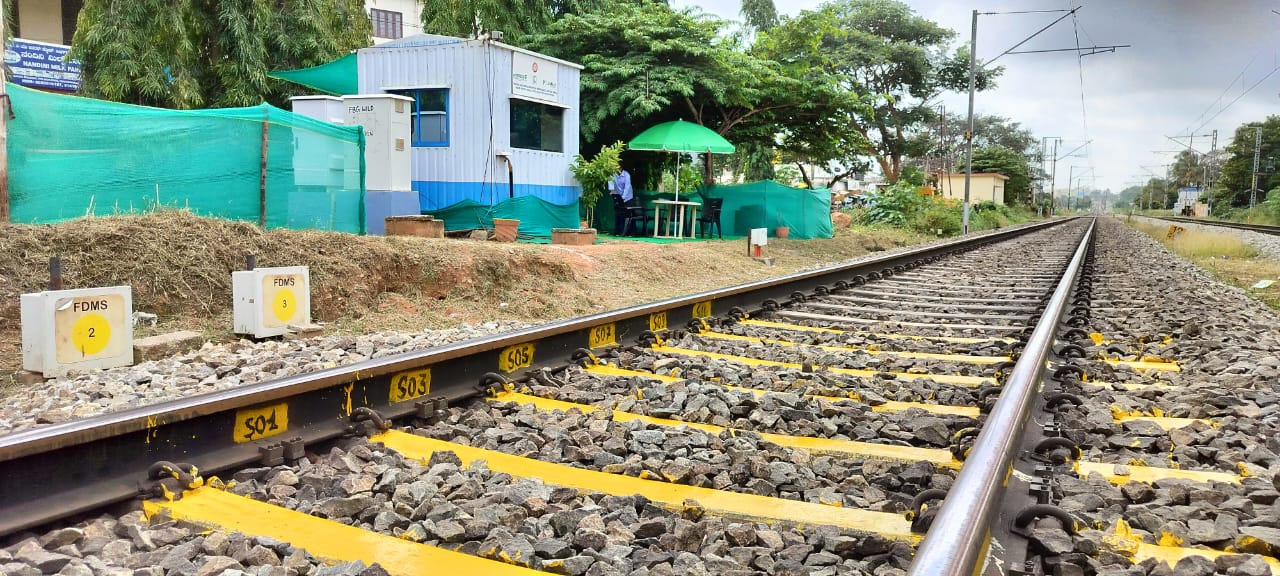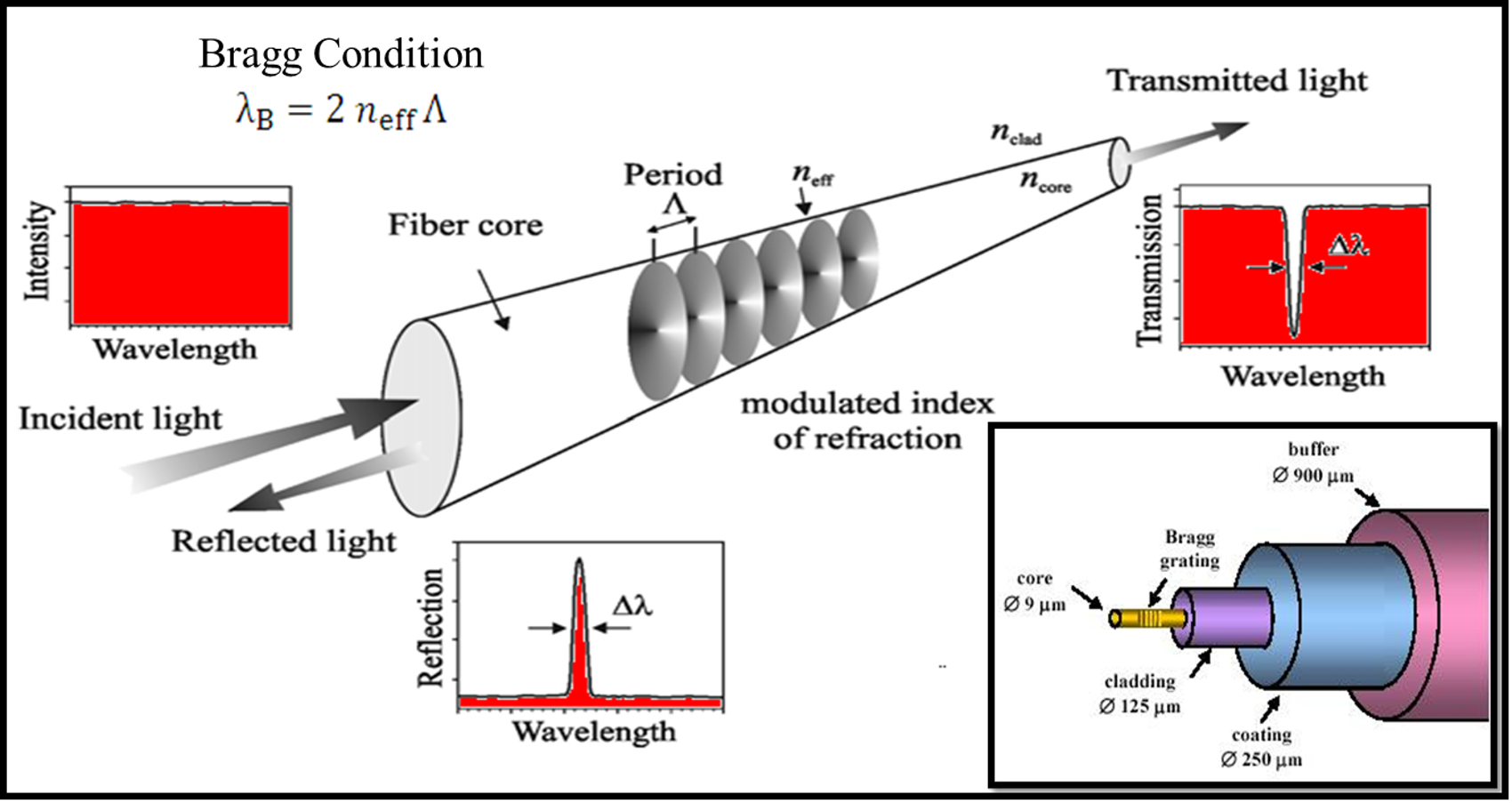

Advanced Railway Safety with Fiber Bragg Grating Sensors
The Axle Counter Plus (ACPS) counts the number of train axles and provides real-time information about track section occupancy. This technology utilizes Bragg Grating optical sensors, offering highly reliable axle counts and section status updates.


FBG sensors are optical sensors that utilize light reflection within optical fibers to detect changes in physical parameters such as strain, temperature, and pressure. These sensors have a periodic variation in the refractive index along the fiber core, which reflects a specific wavelength of light, called the Bragg wavelength, while allowing other wavelengths to pass. When external forces (strain or temperature changes) are applied, the spacing of the grating and the refractive index change,shifting the reflected wavelength.
Accurate and reliable measurements of strain, temperature, and pressure.
Multiple FBG sensors can be embedded along a single fiber, enabling simultaneous monitoring of several points without extra wiring.
Immune to electromagnetic interference (EMI), suitable for harsh environments.
Compact and lightweight, easily integrated into structures.
Excellent stability and durability with minimal signal degradation.
Capable of transmitting data over long distances with minimal signal loss, ideal for remote applications.
Utilizes advanced FBG optical sensors for precise axle detection and counting, ensuring reliable operation even in challenging environments.
Continuously monitors track sections to determine whether they are occupied or clear, enhancing train traffic management and safety.
Immune to electromagnetic interference, making it more dependable than traditional axle counting systems in environments with heavy electrical noise or interference.
The FBG optical sensors are robust and require minimal maintenance, reducing downtime and operational costs.
Provides accurate and timely information on track section status, ensuring safe train operations by preventing potential collisions or conflicts.
Can be easily integrated into various railway signaling systems, offering flexibility for different track layouts and lengths.
.png)
.png)